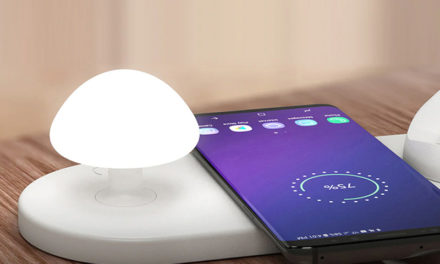
PCoIP - magic from Leadtek?
As it turned out from what was described so far, we received two pieces of hardware. A control card and a client machine. Let's start with the simpler, the card!

As you can read, all you need is a free PCI Express x1 bus to use. The card does not require driver installation, it can be used after installation. In terms of connectors, we can meet two halves. One is a gigabit Ethernet socket and the other is a DVI-like input. Input because you can connect the outputs of the video card to it. Yes, no mistake, I didn't accidentally write outputs. There are two solutions to choose from.

On one side of the Y cable that came with the card you will find a DVI plug that can be connected to two video cards. If you use only one of these, you can use the display next to the machine for the other, and the cloned desktop can be transferred to your client. However, we also have the option to use both connectors. In this case, we can only see the image of the machine through the client, but we also have the option to display these two images on two full HD displays, of course on both displays in full HD. In English, the control card is able to drive two full HD displays via the IP machine via the client machine, all at the speed of sitting next to a workstation!

As we might guess the client is more interesting, at least for the sake of visual inspection. The machine itself is only 21 centimeters high. It is 13 inches deep and 6,5 inches wide, so we are dealing with small items. The back has two USB, one gigabit Ethernet, one speaker output, and a power supply connector. On the front panel you will find two more USB ports, a headphone output and a microphone input, as well as a power switch and a button to connect to the server.


With the right number of USB ports, you can even connect a printer to the client. The small downside is that we can forget about traditional PS / 2 keyboards. There's nothing wrong with mice anyway, it's hard to find one that's not connected via USB.
Of course, we tried the stuff once we got it. Unfortunately, the test was one-sided, because we would have needed at least two clients to build a network of several virtual machines. But the more interesting test, the transmission of the images of the two full displays on the network, was tried.

As we wrote, the card does not need a driver, of course the client does not, so we get away with installations. Installation is terribly easy. You need a router that supports DHCP, this can even be what a normal network is ticking next to PCoIP. Connect the network cables to the Ethernet connectors, the other end going to the router. After switching on, the client checks to see if there is this server card on the network, if so, it offers to connect immediately. We clicked and the server desktop is already displayed on the monitors. It doesn’t hurt to stress again that it’s all done on two full HD displays. Since we don’t work in 3D we just play, we immediately installed some demos to try out what it’s like to play on the client. Well, we have to say that the thing works. It’s true that we’ve tried on a gigabit network, but that’s probably the basis if someone breaks their head at a PCoIP solution. The image arrived on the client-driven displays without delay and interruption, and the connected peripherals also responded without delay.

The interesting thing, of course, would have been to connect to a server at one end of an office building with a client at the other end, because then we could play (work) with a tiny and completely noiseless box as if there was a power plant next to us.
The rehearsal was, let's sum it up!















